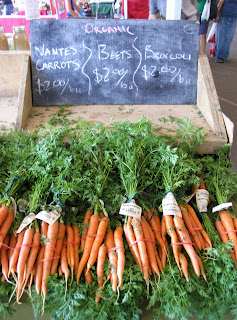Just about every
time I’ve overheard or been involved in a conversation regarding comfort food
or sudden cravings, one particular category of fare inevitably dominates the
discussion: Chinese take-out. Now, I say
“take-out” to describe and differentiate the battered, sugary, caloric
wasteland of American Chinese food from the traditional ethnic foods of China; chow
that’s often harder to find and not what most Americans mean when they say
“Chinese food”. For some, take-out consoles
the spirit during or after a crazy work day; for others it’s relentlessly
hormonal. Still, most will not deny that
the food itself is greasy, gross, grosser after the first ten bites, and most always
leads to an immediate stomach issue: indigestion, heartburn, or dare I say it-
the runs!
Having likely been
one of these people at least at some point (as have I!), you probably already
know what’s going on – why someone would eat, let alone crave, something that
is not only bad for you, but admittedly gross in taste and sensation. In times of stress, physical or emotional,
the brain craves food that will provide immediate fat. As we know, nothing does that better than
sugar and carbs! So in a world where our
lifestyles put us in a constant state of pressure and anxiety, this survival
mechanism can quickly become a big problem (the U.S is the most obese country
in the world! Look it up!).
Seeing as how our
lifestyles and the particular cravings that come along with it aren’t going to
change anytime soon, we need a solution in the form of substitution. That is exactly what my raw food philosophy
is all about – trick the brain, delight the palate, and vitalize the body! The challenge of coming up with an adequate replacement
for take-out, however, was a harrowing one.
The dish had to meet three criteria: one, it had to be sweet enough to
subdue the afore-mentioned survival mechanism; two, it had to have meaty chunks
to satisfy the belly; and the third and most important criteria was that it had
to be FAST! One of the driving factors
in people resorting to take-out is that it is convenient – fast and everywhere. As you’re all aware, raw food is not known
for this.
 After weeks of
experimenting with these three criteria, I finally came up with a truly quick
and delicious recipe that I promise will, at least overtime, replace your favorite
take-out dish. Behold: Sweet and Sour Take-Out! This
dish is ready to eat in literally half the time it would take to order traditional
take-out, taste surprisingly authentic, and doesn’t dirty
more than a bowl, knife, and your favorite pair of chop-sticks. Better still, this dish can be altered a
number of ways to fit your individual taste or seasonal availability. For example, I have a friend who can’t stand
figs – she can very easily replace them with more papaya or even plums. If you find the dish too sweet, replace the
honey with more maple syrup. Moreover, for
those of you who aren’t strictly raw and want a meal that will stick with you
during the rest of your work day, spoon this recipe over some brown rice. I challenge you to try this recipe next time
you have one of those cravings – you may be pleasantly surprised at the outcome.
After weeks of
experimenting with these three criteria, I finally came up with a truly quick
and delicious recipe that I promise will, at least overtime, replace your favorite
take-out dish. Behold: Sweet and Sour Take-Out! This
dish is ready to eat in literally half the time it would take to order traditional
take-out, taste surprisingly authentic, and doesn’t dirty
more than a bowl, knife, and your favorite pair of chop-sticks. Better still, this dish can be altered a
number of ways to fit your individual taste or seasonal availability. For example, I have a friend who can’t stand
figs – she can very easily replace them with more papaya or even plums. If you find the dish too sweet, replace the
honey with more maple syrup. Moreover, for
those of you who aren’t strictly raw and want a meal that will stick with you
during the rest of your work day, spoon this recipe over some brown rice. I challenge you to try this recipe next time
you have one of those cravings – you may be pleasantly surprised at the outcome.
Serves 2
1
c black or turkey figs, chopped
1
c papaya, chopped
one
medium carrot, sliced on the diagonal
1
Tbsp sesame seeds
one
recipe Sweet & Sour Sauce
1. Prepare Sweet &
Sour Sauce according to recipe
2. Place carrots,
fruit, and sauce into a large bowl, stir thoroughly, and sprinkle sesame seeds
over top of dish to serve. Dish can be
eaten immediately with or marinate a half hour for stronger flavor.
Sweet & Sour
Sauce
Use maple
sugar (evaporated maple syrup crystals) instead of maple syrup for thicker
sauce. Great for dipping!
1
Tbsp honey or agave nectar (honey recommended for taste)
1
Tbsp maple sugar or maple syrup
1
Tbsp apple cider vinegar
large
pinch ground clove
1. Blend all
ingredients well
2. Serve immediately or
store in fridge for up to one week













